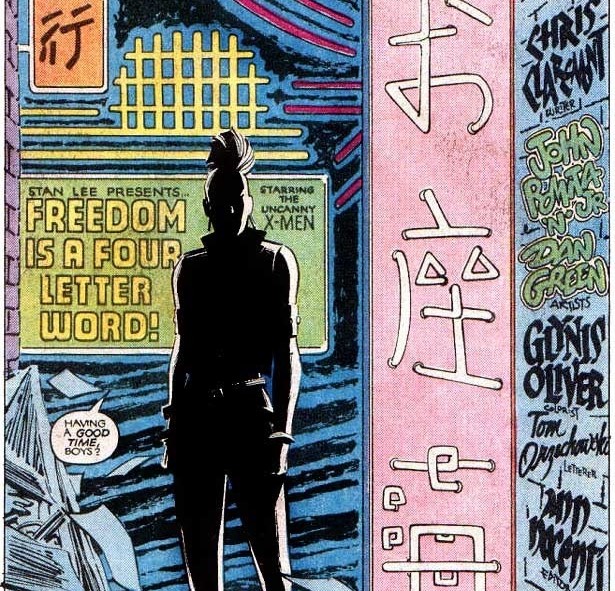Placing Kitty Pryde into the position of viewpoint character has to represent one of the most groundbreaking decisions within the entirety of the Claremont run – a move that ultimately impacted the series, comics as a whole, and even Western media in powerful ways. #xmen 1/10 

The Claremont run begins with Cyclops as the main viewpoint character. Kitty joins the team right at his departure and soon enough takes over as a main viewpoint character for the rest of her tenure, as reflected in our data (noting that Kitty’s only on for 70ish issues). 2/10 
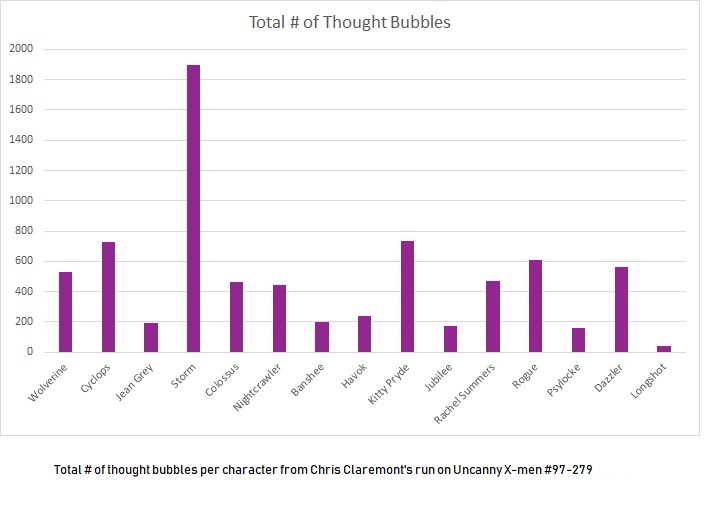
At the time of her arrival, Claremont had already executed a turn toward more adult-oriented stories (something that becomes even more pronounced after the death of an X-Man in DPS). It’s therefore perhaps odd to bring on a teen protagonist. 3/10 
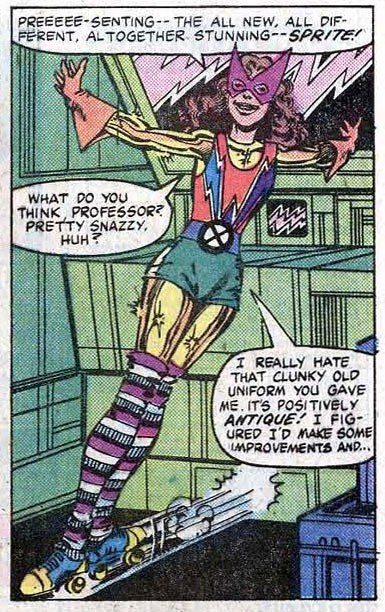
Kitty’s capability is immediately established, however, first with a “Days of Future Past” story that establishes her position of prominence in the team’s future, then immediately after that in a solo story which sees her defeating a demon by herself. 4/10 

Once established, Kitty carries more and more of the viewpoint character role in the series. That role is always distributed across different characters, but never equally (see Colossus as example) and Kitty becomes Claremont’s goto. 5/10 

This transition has a number of notable effects: First, it creates a greater sense of parity between the protagonist’s age and that of the series’ implied/intended audience, making immersion into the X-Men’s world that much easier for younger readers. 6/10 

Second, instead of allowing Kitty to make the text more juvenile, Claremont persists in his depiction of horrific experiences - using Kitty’s sense of being overwhelmed (despite her capability) to enhance the sense of vulnerability and tension within the series overall. 7/10 

Third, having an emotionally vulnerable hero take center stage in a conflict between superpowered beings presents opportunities to speak to the cost of the conflict in much more human and relatable terms, leading to a more nuanced representation of emotional toll. 8/10 
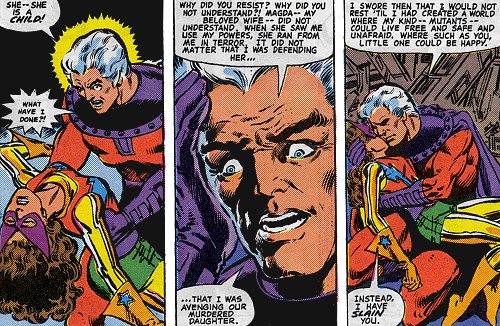
Finally, we have to note that even though X-Men was already defying the masculinist norms of the superhero genre at the time of Kitty’s arrival, having a 13 year old girl serve as the protagonist of a superhero adventure comic was wholly unique. 9/10 

As scholar Margaret Galvan notes: “Fighting against expectations, Pryde extends the field of what powerful superheroines look and act like.” That she did so from a position of prominence, and that it worked so well, serves as testament to the character’s legacy. 10/10 
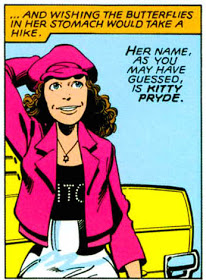
• • •
Missing some Tweet in this thread? You can try to
force a refresh





